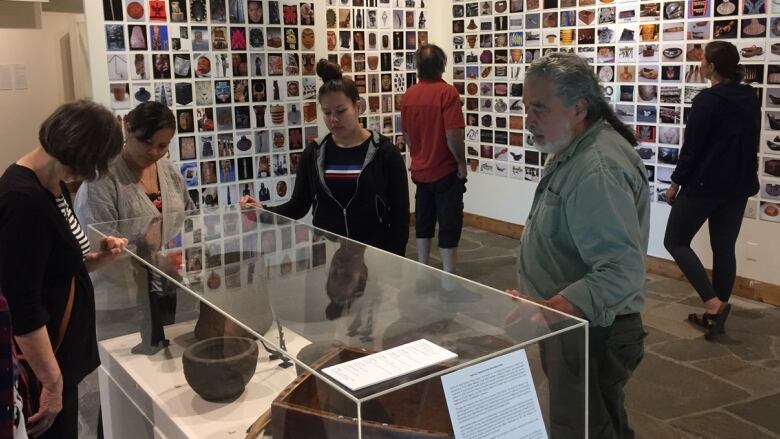New emotional gallery exhibit highlights return of Haida ancestors and artifacts
'Our art is the companion to our Haida language. It is our form of writing'

With the helpof the Haida Nation, the Haida GwaiiMuseum has repatriated many historic Haida artifacts and ancestors from all around the world.
These cultural treasures are part of a special exhibition now open in Haida Gwaii,an archipelago off British Columbia's coast.
Many historicHaida belongings, both everyday and artistic,aredisplayed though 1,500 photographs. The imageswere sent by or collected from various museums, universities and private owners in North America.
Jisgang Nika Collison, a Haidaexecutive director and curator at the museum, says the repatriation is very important to the Haida people. It's a way to bring theirculture home.
"Our art is the companion to our Haida language. It is our form of writing," Collisontold Carolina de Ryk, host of Daybreak North.
"Those types of repatriations are really complex, a very long process and huge in healing and in strengthening our nation's language art and culture. It's a critical component of that."

The Haida repatriation committee,with the help of the Council of the Haida Nation, has worked to bring over 500 ancestors home for reburial on Haida Gwaiiover the last 30 years.It's been the life work of many people on Haida Gwaii, says Collison.
Collison says the intentof the exhibition is to educate the public on how Haida ancestors and cultural heritage wound up in global museums and other institutions around the world. It also shows how the Haida have builtpositive relationships with these institutions.

Why the pieces were taken away
The artifacts weretaken from Haida Gwaiiafter the smallpox epidemic in the 1860s and as colonialism grew, according to Collison.
"As part of the colonial system there was a lot of thieving on Haida Gwaii taking our cultural treasures in the name of science and the benefit of humanity, as people thought we weren't going to stick around."
While many pieces were taken by force, others were sold.
"But I maintain, and many of us do, that the majority of those pieces were sold under duress."
Collison believes this, because manyof the pieces were taking during the potlatch ban where ceremonial distribution of property and gifts in Indigenous communities wasprohibited. She says it was a time ofextreme social and economic marginalization.
Listen to the full interview here
With files from Daybreak North












_(720p).jpg)


 OFFICIAL HD MUSIC VIDEO.jpg)
.jpg)



























































































